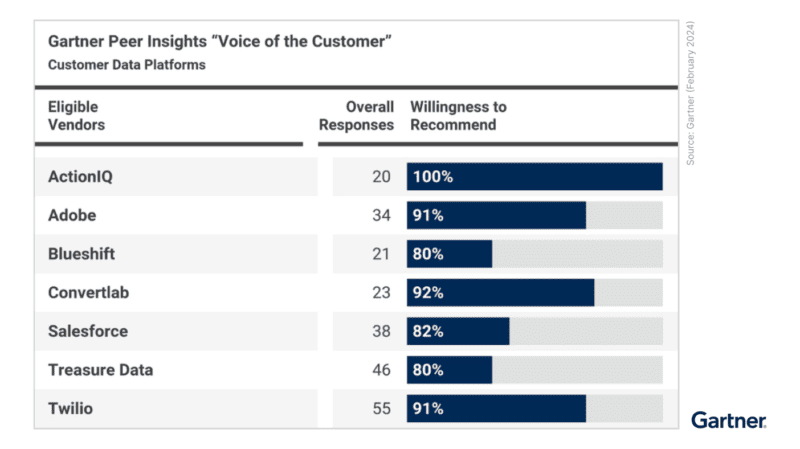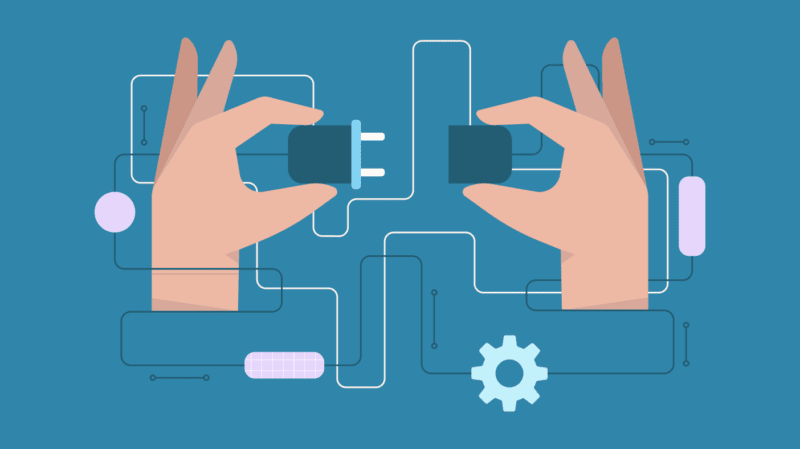Martech Mastery: CDP vs MDM and Their Key Differences

Welcome to episode 3 of Martech Mastery: CDP vs MDM and Their Key Differences. This a video series from ActionIQ’s Head of Martech Strategy, James Meyers. As a former analyst for one of the world’s most respected technology research and advisory firms, James wants to help you make great technology decisions and look like an expert in the process.
You can also check out episode 1 on CDP 101 and episode 2 on CDP Benefits and the cost of doing nothing.
This episode of Martech Mastery is about the differences between customer data platforms (CDP) and master data management (MDM) systems. Watch the video below and keep scrolling to read a breakdown:
CDP vs MDM: How Are They Different?
As James points out in the above video, CDPs and MDMs are designed for different end users with distinct goals.
While CDPs are built to help customer experience (CX) and marketing teams facilitate and improve customer experiences, MDMs are designed to help IT and customer support teams create a master ID for individual customers.
CDPs store unlimited amounts of customer data from across all channels, enabling brands to better understand their customers and orchestrate experiences across marketing, sales and customer service channels.
Meanwhile, you can think of MDMs as highly advanced Rolodexes, storing business contact information such as names, addresses, phone numbers, emails and relationships. This technology empowers businesses to add, update, correct and match customer identities in pursuit of a master ID, sometimes referred to as a golden ID.
Both technologies feature deterministic and algorithmic matching. However, while CDPs are rarely used as identity systems of record for enterprise companies, MDMs always are. This goes back to the ultimate purpose of CDPs: to support customer experiences, not act as an enterprise-wide identity management platform.
How Are CDPs and MDMs Used for Identity Resolution?
Because MDMs are built specifically to help organizations develop a golden record for individual customers, they feature more sophisticated tools for resolving customer identities.
CDPs are not designed for customer profile stewardship or storing customer relationship metadata. But organizations can use MDMs to look up profiles, correct spelling mistakes or assign relationships to individual customers.
And while CDPs certainly provide capabilities for resolving customer identities, MDMs have more advanced options for accomplishing this, including the ability to infinitely adjust deduplication rules, manually deduplicate profiles or split customer IDs.
With that said, CDPs excel at managing anonymous customer records, including deduplicating them. MDMs do not. Additionally, unlike MDMs, CDPs provide enterprises with the ability to segment, analyze and activate customer data across all channels.
Why is There Confusion With CDP vs MDM?
Since both technologies provide organizations with the ability to create a master customer record, they’re sometimes thought of as interchangeable tools. However, CDPs have some identity management limitations, which makes MDMs a better choice for managing identities at enterprises with all of the following characteristics:
- Have millions of customers
- Conduct business through a mixture of online and offline channels
- Have a high risk of duplicate customer identities
Why? Because customers often have multiple ways of representing themselves (e.g., James Meyers versus Jimmy Meyers) and their addresses (123 Main Street Apartment A versus 123-A Main St.). The same goes for businesses (e.g., Brand X versus Brand X Corporation). Also, people are prone to making errors when typing (e.g., Jimmy Meyers versus Jimmie Myers).
All of these situations require a way to deduplicate customer records, and while CDPs with deterministic and algorithmic matching capabilities can support this, they don’t enable you to manually split or merge profiles, steward profile data, employ infinite rule customization or manage contact-to-contact relationships.
How Can I Make the Best Choice for My Organization?
Since accurate customer identities are essential to extracting valuable insights and orchestrating personalized customer experiences, you should always prioritize identity management. That means if your organization fits the criteria for requiring an MDM, you should deploy one today if you haven’t already.
However, not all companies have the budget for an MDM. In situations such as these, a CDP that provides deterministic and algorithmic matching can act as a worthwhile substitute while you begin saving for an MDM to take your identity management to the next level.
But keep in mind that, even with an MDM, you won’t be able to empower your business teams to self-serve customer insights and use this data to orchestrate customer experiences. That’s why the ideal scenario is using a CDP and MDM in conjunction with each other, not choosing one over the other.
Stay tuned for episode 4 of Martech Mastery, when James will dive into building versus buying a CDP.
CDP vs MDM: Learn More
Download our CDP Market Guide to learn more about different types of CDPs or contact one of our experts to see how ActionIQ can help you become a martech master.





